#pahlavi
Text
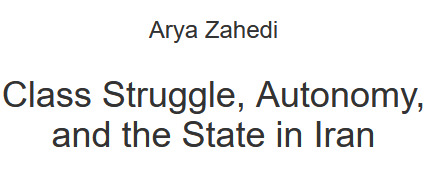
The Pahlavi Regime
The coup of February 1921 that brought General Reza Khan to power set into motion the creation of the modern centralized Iranian nation-state. The Pahlavi state should be seen alongside the other right-wing nationalist regimes that arose around this time in response to both the dissolutions brought about by WWI and the threat of the October Revolution. Reza Shah may be fruitfully compared to his contemporary in Turkey, Atatürk, as well as the models of authoritarian nationalist development seen in Germany, Italy, and Japan. As with these latter cases, the Pahlavi regime was “the product of a counter-attack by a weak capitalist class against a revolutionary movement, in a country that has slipped behind in the process of capitalist development. This class could only redress this position by repression and state-directed economic growth.”[10]
The political logic of this period can be summarized as state-building. Once the new government negotiated the withdrawal of Soviet and British troops, it moved to crush all remaining forms of opposition and centers of power. The powerful tribal armies were brought to heel, while autonomous and local powers, as well as rival officers in pursuit of power, were all crushed. A modern army capable of effectively asserting state power was assembled, followed soon after by nationwide conscription, government ID cards, the abolition of aristocratic titles, and the imposition of formal sur-names. Since the central pillars of the “new order” were a modern army and bureaucracy, the regime sought to extend the power of the state to all realms of society. Local languages were banned, and Persian was made the official language of the country. A modern educational system operating beyond the control of the clergy was established, and something similar was done with the courts, ushering in a modern legal system independent of the religious orders. Perhaps the most symbolic of these changes was the ban on the chador, which, alongside the rest of such reforms, provoked the ongoing ire of the clergy.[11]
Many reformists, and even some to their left, initially supported Reza Khan. Like the Lasalleans in support of Bismark, they thought that by supporting Reza Khan they could push through many of the reforms that ran into dead ends when employing exclusively democratic channels. In 1925, the Qajar Dynasty was abolished, but unlike Attaturk, who founded a republic, the following year he crowned himself Reza Shah Pahlavi and founded a new dynasty.[12] Reza Shah continued solidifying his rule with an iron fist. The regime promoted a chauvinistic nationalist ideology that appealed to the imperial glories of pre-Islamic Persia. The state in this period can be best summarized as a monarchical-military dictatorship.
While the environment was repressive, the industrialisation projects of this era increased the size and importance of the working class, within which communists organized successful union drives. This culminated in 1929, when a massive strike broke out at the Abadan oil refinery complex, which was under the ownership and control of the Anglo-Iranian Oil Company. The strike shook the ruling classes in both Iran and Britain, and served not only as a key event in the history of the working class movement in Iran, but also as a test for the state’s ability to maintain social order. The government responded with a great show of force, ratcheting up repression against communists. In 1931, a new law was enacted that criminalized the teaching and promotion of “communist” ideologies, banned trade unions, made striking illegal, and initiated a new wave of repression of socialist activists and intellectuals were imprisoned.[13]
Although the Pahlavi state enjoyed a degree of independence from the dominant classes, this also tended indirectly to facilitate the latter’s rule. Under both Pahlavi Shahs, it was through the state that capitalist development and industrialization took place. It was through the state that the modern capitalist class was consolidated and expanded, a fact that would remain no less true under the current day Islamic Republic. In many respects, it could be argued that both the Pahlavi regime and the Islamic Republic share features with the imperial state of Napoleon III after the coup of 1852: the latter built a state that was relatively autonomous from the ruling classes, yet which was in the end to the benefit of those classes as a whole, having “destroyed the political domination of the bourgeoisie only to preserve its social domination.”[14]
The reign of Reza Shah came to an end with World War Two. In the intervening years, the Iranian regime grew closer to the axis powers, particularly Germany, with whom it had affinities both political and ideological. The number of German advisors, engineers, and workers had increased greatly. When Germany invaded the Soviet Union in 1941, the Allies wanted to use Iran to send weapons from the Persian Gulf to the Russian front. When Reza Shah refused, the Allies promptly invaded and occupied the country. Reza Shah abdicated in favor of his young son, Muhammad Reza, and lived the rest of his life in exile.
The Allied invasion of 1941, which caused the fall of Reza Shah’s dictatorship, opened up a period of popular political mobilization and activity. Political prisoners were released, trade unions reconstituted themselves, and political parties began to come into shape. While the invasion caused the fall of Reza Shah, the Allies still maintained the state, particularly the monarchy and the military. The Allies would occupy Iran until after the end of the war, with once again the Soviets occupying the north and the British occupying the south. This is also the beginning of the American involvement in Iran, with a military mission sent to Iran to rebuild the army.
When the communist prisoners were released a core of them founded the Tudeh [masses] Party, which would be the official pro-Moscow communist party in Iran. The party had a democratic-populist platform and attracted many intellectuals and middle-class elements. It was also a major presence among the industrial working class, organizing what would be by the end of the decade the largest trade union confederation in the Middle East.
After the war, Iran would be the stage for the confrontation of many social struggles, as well as the first conflict of the cold war. In 1946, the Soviets continued to occupy the north after the agreed upon allied withdrawal. Two autonomous republics were founded in Mahabad and Azerbaijan under the protection of the Red Army. At the same time, a number of communists were included in the post-war coalition government. The Soviets withdrew their forces, and the imperial army moved in with great repression. The communists were also pushed from government, as would be the case with the fall of the coalition governments of France and Italy in 1947. This was the first victory of the new US-Iran military alliance that had begun during the war.
Following the Second World War, the movement for Iranian national independence experienced an upsurge, focused on the demand to nationalize Iranian oil. At the center of this surge was the National Front, led by Dr. Muhammad Mossadegh, who soon gained a mass following and was made Prime Minister in 1951. The National Front was not a party with a single ideology, but an alliance of various parties united around national independence through the oil question. When parliament voted to nationalize the oil industry, the British reacted immediately by imposing an economic blockade on Iran. The result was a great strain on the economy and a major increase in social tensions. The Tudeh Party was increasingly showing their strength. The United States feared that the uncertain situation would create an opportunity for Tudeh to seize power. This was the beginning of the successful coup by pro-Shah rightist military generals in 1953.[15]
The 1953 coup closed the door on the social movements that had opened up with WW2. The period that followed was one of severe repression. The coup would solidify the position of the Shah and the military against all rivals and competing sources of power. It also established the United States as the dominant imperialist power, supplanting the British. The main weight of the repression came against the communists in the Tudeh Party. The party’s network was rooted out and the trade union confederation destroyed. Many militants were imprisoned, executed, or went into exile. It was in order to facilitate this new order that the US helped the regime set up a new secret police force, the Organization for Information and Security of the Country, known commonly by its Persian acronym, SAVAK. Its name would come to be synonymous with repression and torture under the Shah’s dictatorship.
#pahlavi#pahlavi regime#iran#middle east#Anti-imperialism#history#Ill Will#insurrection#Class Struggle#Autonomy#anarchism#resistance#prison abolition#acab#jail#prisoners#autonomy#revolution#community building#practical anarchism#anarchist society#practical#practical anarchy#anarchy#daily posts#communism#anti capitalist#anti capitalism#late stage capitalism#organization
11 notes
·
View notes
Text

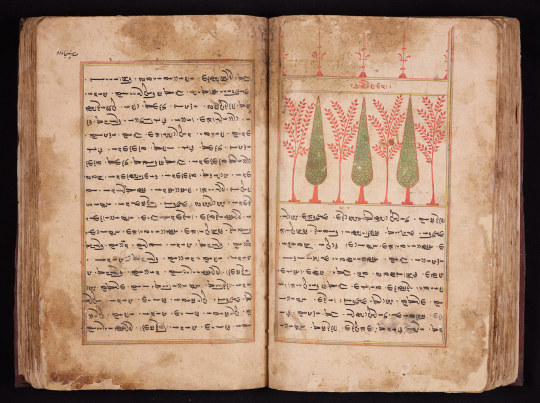
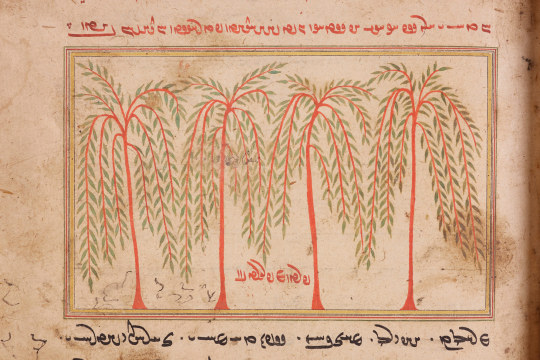
An illustrated Videvdad Sadah
Yazd, Iran; 1647
Copied by Mihrbān son of Anūshīrvān son of Bahrām Shāh
Source: The British Library
"Burjorji Ashburner was a successful Bombay merchant, a Freemason, and a member of the Bombay Asiatic Society. He was also a member of the Committee of Management for one of the most important Zoroastrian libraries in Bombay, the Mulla Firuz Library and made a special point of having copies made of some of the rarer items. In April 1864 Burjurji wrote offering some 70 to 80 volumes as a gift to the Royal Society, London, promising to add additional ones:
In the course of antiquarian researches...with special reference to the Parsee religion, I have had the good fortune to obtain some valuable ancient manuscripts in Zend, Pehlui, and Persian. I do not wish to keep to myself what may be useful in the literary world. [1]
His collection consisted of standard Arabic and Persian works in addition to nineteen specifically Zoroastrian manuscripts in Persian, Avestan and Pahlavi. A number of Bujorji’s manuscripts came originally from Iran. The oldest is an illustrated copy of the Videvdad sādah which was copied in Yazd, Iran, in 1647. Whereas Zoroastrian manuscripts are generally unillustrated except for small devices such as verse dividers and occasional diagrams, this one, exceptionally, contains seven coloured drawings of trees, used as chapter headings not unlike Islamic manuscripts of the same period.
The beginning of chapter 19 of the Videvdad sadah in which Zoroaster repels an attempt on his life by the demon Buiti, sent by the evil spirit Angra Mainyu. Note the elongated calligraphic script which is typical of the older manuscripts from Iran."
#zoroastrianism#parsi#parsee#iran#pahlavi#british library#videvdad#yazd#zoroastrian#videvdad sadah#burorji ashburner#Zoroaster#Manuscript#Persian#Religion#religious art#personal archive
21 notes
·
View notes
Text
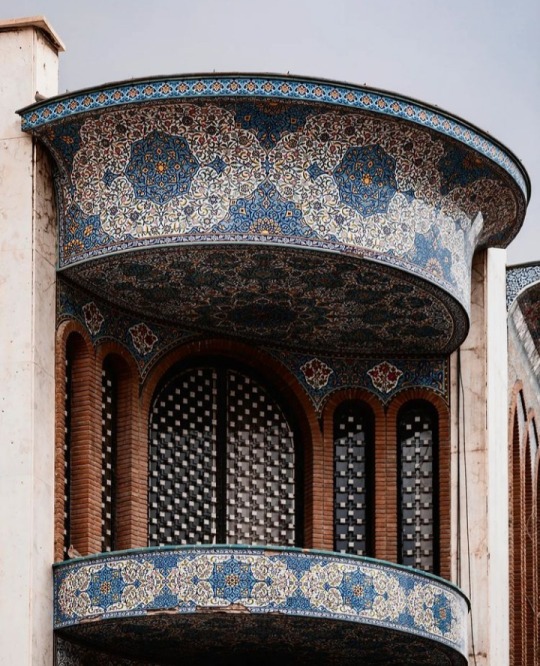

Bank mellat building/ Shiraz/ Iran
Photography: amir yousefi
#iran#middle east#iranian#persian#persia#travel#farsi#art#culture#architecture#shiraz#pahlavi#qajar#persian architecture#persian art#adventures#trip
276 notes
·
View notes
Text

Belgian State Visit to Iran in 1964, Queen Fabiola of Belgium and Empress Farah of Iran, King Baudouin of Belgium and Shah Mohammad Reza Shah Pahlavi of Iran
Belgian vintage postcard
#shah#iran#vintage#visit#photography#farah#1964#postkarte#mohammad#carte postale#postal#empress farah#briefkaart#pahlavi#shah mohammad reza shah pahlavi#baudouin#postcard#state#old#fabiola#empress#photo#ansichtskarte#king#queen#sepia#belgian#reza#belgium#postkaart
8 notes
·
View notes
Text

#IFTTT#Flickr#زنداناوین#iran#mahsaamini#iranprotests#مهساامینی#اوین#reza#pahlavi#jinaamini#jinamahsaamini#iranprotests2022#evinprison#kurdistan#zhinaamini#ژیناامینی#نیکاشاکرمی#نویدمحمدزادە#حسینصفامنش#سیاسی#خۆرهەڵات#ژینائەمینی#شەقامیتووڕە#اعتصاباتکردستان#دێموکرات#کومەلە#کۆیە#دەمیڕاپەڕینە#مهساامین
12 notes
·
View notes
Photo







Portraits at Toronto Freedom Rally. March 2023 - Photos FilmMission
#Street Photography#Street Portraits#Toronto Freedom Rally#Freedom#Film Mission#Pahlavi#Toronto#Toronto Photographer#flag
6 notes
·
View notes
Text
“buništag dō ēk dādār ud ēk murnjēnīdār...”
“The principles are two: one is the creator, one is the destroyer...”
(cf. VZ 1.21, 28; 22.5)
••• ••• •••
Eudoxos, Theopompos, and Hermippus spoke of “two principles” (δύο ... ἀρχάς) that were called Oromazdes and Areimanios by the Magi. Aristotle uses δαίμων (≈ Av. mainiiu-) as the generic term for two opposing transcendent beings of the Iranian religion. In Plutarch’s de Iside (46), θεός, “god” is used as a general term for the two highest divinities (θεοὺς), which are seen as “rivals” (ἀντιτέχνους). Referring then back to the relevant Iranian terminology, Plutarch makes the distinction between θεός = Ahura Mazdā (Ὡρομάζης) and δαίμων = Aŋra Mainiiu (Ἀρειμάνιος).
This distinction between θεός vs. δαίμων could also be an an allusion to Av. ahura vs. daēuua.
••• ••• •••
Ἀριστοτέλης δ' ἐν πρώτῳ Περὶ φιλοσοφίας καὶ πρεσβυτέρους εἶναι τῶν Αἰγυπτίων· καὶ δύο κατ' αὐτοὺς εἶναι ἀρχάς, ἀγαθὸν δαίμονα καὶ κακὸν δαίμονα· καὶ τῷ μὲν ὄνομα εἶναι Ζεὺς καὶ Ὠρομάσδης, τῷ δὲ Ἅιδης καὶ Ἀρειμάνιος.
“Aristotle in the first book of his dialogue ‘On Philosophy’ declares that the Magi are more ancient than the Egyptians; and further, that they believe in two principles, the good spirit and the evil spirit, the one called Zeus or Oromasdes, the other Hades or Arimanius.”
(Diog. Laert., Proem. 6.8)
••• ••• •••

Now onto the actual Pārsīg term ‘bun(išt)(ag)’, ‘principle’, in Middle Persian and Avestan texts…
MPers. ‘bun’ (bwn), derives from OIr. *buna-/būna- (OAv. būna-, YAv. buna-), denoting ‘source, origin, foundation’ (a fundament or principle).
In the Avesta though, the word seems to denote a deep, dark, lightless, material place of origin/rest. One phrase from the Vidēvdāt (19.47) writes, “bunəm aŋhəūš təmaŋhe”, “(into the) ground of the dark existence (where demons reside)”. The Pahlavi translation of the line then uses the same ‘bun’; “ō bun ī axvān ī tom* kē ērang dūzax”, “into the basis of the dark-places of being, the horrible hell.” (*MPers. tom = Av. təma-, ‘dark’.)
It may be that the term underwent semantic development into a generic meaning of “source, principle” later on (post-Achaemenid). Hence we receive MPers. ‘dō-bun’, the two-origins — the creative and destructive forces (Dadar Ohrmazd & Ahriman, Yazata & Daeva, Asha & Druj) that battle in the material creation (gētīg/gusha/gita) through the linear cycles of finite time (linear-wise it’s 9,000 total warring years which make up the last 3 cyclical periods of Zurvan-Daregho-Xvadata).
Although that being stated, it seems that evil is ultimately finite vs. good which is always infinite.
Ohrmazd exists as zamān ī akanārag “for (as?) the infinite time.” The expression zamān ī akanārag is a calque for zurvān ī akanārag “infinite time/space.” The appearance of that Z/zurvān (endless space/time) in the cosmological context (cf. VZ 1.27-28) is motivated by the idea of a “pact” (paymān, pašt) between both principles (Ahriman & Ohrmazd) which again, lasts for 9,000 years (see Bundahišn 1.10 and then 1.24). Mithra/Mehr, who is the divinity of oath/contract, is sometimes identified as serving as the mediator between the duo’s battling.
In addition, the reason why the material creation and material/finite time/space are created by Ohrmazd is to serve as a trap for Ahriman, who through the prior mentioned reciprocal agreement leads himself unknowingly (as he has no foresight) to his demise (frašokereti). Otherwise they’d be in conflict for eternity (prior to Bundahišn/creation, they were unmanifest in Zurvan Akarana). Ohrmazd ultimately bases the world off of Asha, the order and flow of the cosmos. It is visually seen as a flame (thus the creation is like the living fire).

#zoroastrian#dualism#zoroastrianism#religion#pahlavi#Middle Persian#sorry it’s lengthy but here’s food for thought I guess#frashokereti is an eschatological concept but also a personal one#Iranic
9 notes
·
View notes
Text


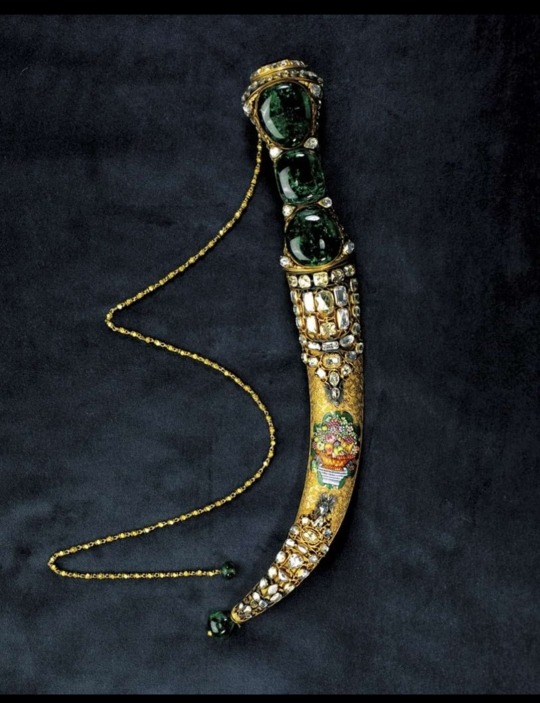

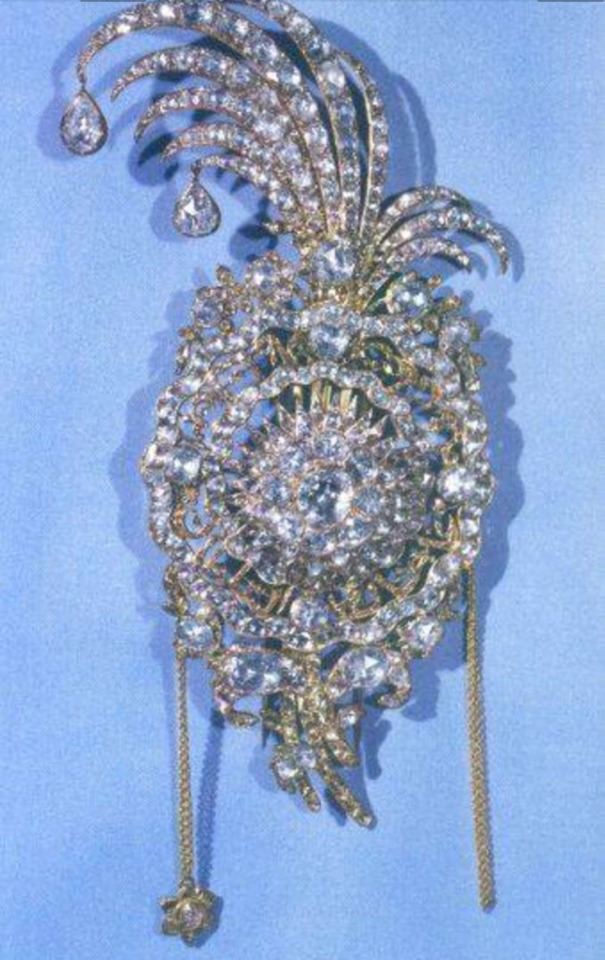
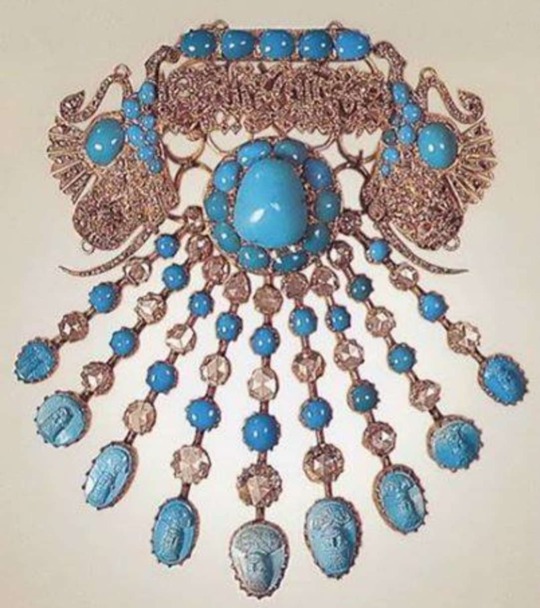

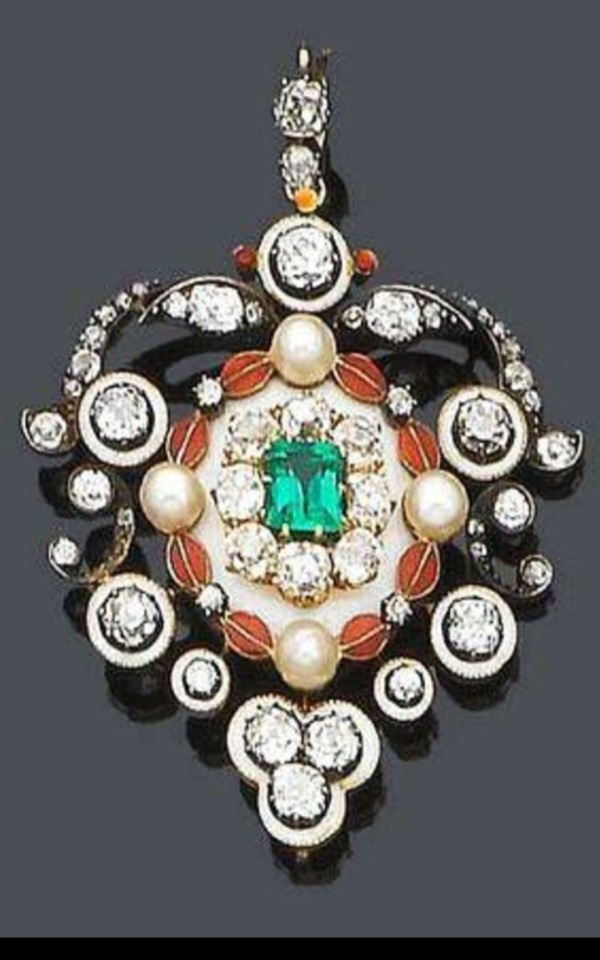

7 notes
·
View notes
Text
::
Pahlavi as Shah, had this figured out a long time ago:
::

2 notes
·
View notes
Text
« Les femmes n’osent plus sortir sans voile de peur d’être malmenées ou, pire, vitriolées. Le 11 mai, des ouvrières sont d’ailleurs assaillies par des individus qui leur aspergent le visage d’acide parce qu’elles ne portent pas le tchador. La terreur morale s’installe. Progressivement, plus ou moins volontairement, les jeunes filles se mettent à porter une sorte de chasuble, un fichu rabattu sur le nez, que les anciens identifient à un maghna-é. »
Pierre & Christian PAHLAVI - Le marécage des ayatollahs (Tempus) - page 113
3 notes
·
View notes
Photo

. 𝗧𝗵𝗲 𝗴𝗼𝗮𝘁 𝗮𝗻𝗱 𝘁𝗵𝗲 𝗽𝗮𝗹𝗺 𝘁𝗿𝗲𝗲 A design based on the ancient story of the goat and the palm tree! All designs by me. . . . #goatpattern #palmtreepattern #carpetdesign #carpetdesigner #alalenirumand #rugdesigner #grendgallery #persiancarpet #persianrug #persian #pahlavi #pahlavistory #homedecoreideas #vintage #oldtime #iranianmythalogy #persiangreen #greenlover #homedecore #bedroomdecore #classicrug #domotex2023 #covermagazine #floralpattern #redbubble #redbubbleartists #artprint #framedartprint #showercurtain #curtain https://www.instagram.com/p/Cp-f1vCKIzi/?igshid=NGJjMDIxMWI=
#goatpattern#palmtreepattern#carpetdesign#carpetdesigner#alalenirumand#rugdesigner#grendgallery#persiancarpet#persianrug#persian#pahlavi#pahlavistory#homedecoreideas#vintage#oldtime#iranianmythalogy#persiangreen#greenlover#homedecore#bedroomdecore#classicrug#domotex2023#covermagazine#floralpattern#redbubble#redbubbleartists#artprint#framedartprint#showercurtain#curtain
0 notes
Text

Spotted at the pro-Israel rally in Washington: Yasmine Pahlavi, wife of Persian Crown Prince Reza Pahlavi.
The Iranian royal family lives in exile in America, where they remain strong supporters and allies of Israel.
221 notes
·
View notes
Text
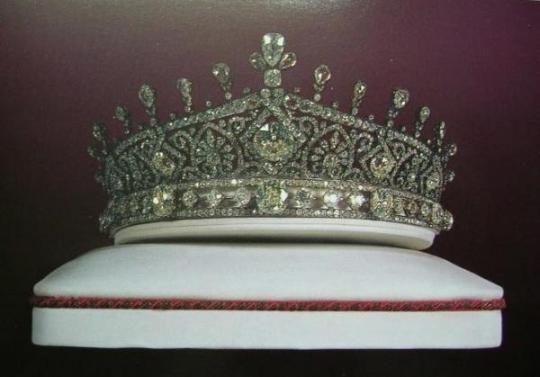
Empress Farah's Diamond Tiara ♕ Government of the Islamic Republic of Iran
104 notes
·
View notes
Text

Farah Pahlavi, Queen and Empress of Iran and Mohammad Reza Shah of Iran on a visit in Amsterdam, North Holland, Netherlands
Dutch vintage postcard
#farah pahlavi#queen#historic#amsterdam#iran#photo#briefkaart#vintage#netherlands#dutch#visit#sepia#mohammad reza shah#photography#carte postale#postcard#pahlavi#postkarte#postal#tarjeta#ansichtskarte#old#ephemera#postkaart#empress#reza#shah#mohammad#farah
5 notes
·
View notes
Text

#IFTTT#Flickr#زنداناوین#iran#mahsaamini#iranprotests#مهساامینی#اوین#reza#pahlavi#jinaamini#jinamahsaamini#iranprotests2022#evinprison#kurdistan#zhinaamini#ژیناامینی#نیکاشاکرمی#نویدمحمدزادە#حسینصفامنش#سیاسی#خۆرهەڵات#ژینائەمینی#شەقامیتووڕە#اعتصاباتکردستان#دێموکرات#کومەلە#کۆیە#دەمیڕاپەڕینە#مهساامین
3 notes
·
View notes
